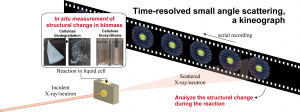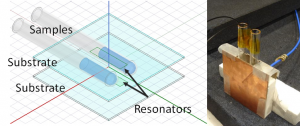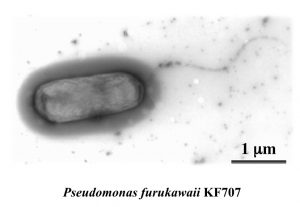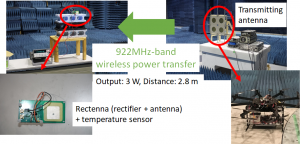2018 Activity Report for Mission 2: Advanced Development of Science and Technology towards a Solar Energy Society
Updated: 2019/05/07
Research 1: Measurement of biomass formation/degradation with small angle scattering techniques
Principal Investigator (PI): Tomoya Imai (RISH, Kyoto University)
Research collaborators: Paavo A. Penttilä (RISH, Kyoto University, Institute Laue-Langevin, Aalto University), Yoshiaki Yuguchi (Osaka Electron-Communication University)
Biomass like wood is in general a polymer solid. Degradation of such solid structure is an important process for efficient biomass utilization. Formation of biomass on the other hand is a very interesting biological activity as it is actually an active control of polymer molecules toward specific molecular assembly at ambient temperature and pressure in aqueous environment. Such dynamism of solid structure is then an important issue for both basic and applied science of biomass. During this FY, we published several papers for degradation and formation of cellulose, a typical biomass molecule, with small angle scattering (SAS) technique, which is able to analyze the dimension of polymer molecules assembly in aqueous environment.
Publications, etc.
- Paavo A. Penttilä, Tomoya Imai, Junji Sugiyama, Ralf Schweins: Biomimetic composites of deuterated bacterial cellulose and hemicelluloses studied with small-angle neutron scattering, Eur. Polym. J., 104, 177-183, (2018)
- Paavo A. Penttilä, Tomoya Imai, Jarl Hemming, Stefan Willför, Junji Sugiyama: Enzymatic hydrolysis of biomimetic bacterial cellulose–hemicellulose composites, Carbohydr. Polym., 190, 95-102 (2018)
- Paavo A. Penttilä, Tomoya Imai, Marie Capron, Masahiro Mizuno, Yoshihiko Amano, Ralf Schweins, Junji Sugiyama: Multimethod approach to understand the assembly of cellulose fibrils in the biosynthesis of bacterial cellulose, Cellulose, 25, 2771-2783 (2018)
- Hirotaka Tajima, Paavo A. Penttilä, Tomoya Imai, Kyoko Yamamoto, Yoshiaki Yuguchi: Observation of in vitro cellulose synthesis by bacterial cellulose synthase with time-resolved small angle X-ray scattering, Int. J. Biol. Macromol., 130, 765-777 (2019)
Research 2: R&D of a Microwave Heating Applicator for Chemical Reaction
Principal Investigator (PI): Tomohiko Mitani (RISH, Kyoto University)
Research collaborators: Daichi Nishio, Naoki Shinohara (RISH, Kyoto University)
A microwave heating applicator utilizing electromagnetic coupling for chemical processing was designed via 3D electromagnetic simulation. We successfully developed an applicator which can heat up two water samples (volume: 4.3 ml each) simultaneously. Experimental results show the samples could be heated up to 75 degrees in Celsius by 2.45-GHz microwaves at the output power of 10 W. The temperature difference of two samples was around 3 K.
Publications, etc.
- Mitani, T., Nishio, D., PCT/JP2018/033576, September 11, 2018.
- Mitani, T., Nishio, D., Shinohara, N., “Feasibility Study on a Microwave Heating Applicator Using Electromagnetic Coupling”, 2018 Asia-Pacific Microwave Conference (APMC 2018), FR1-103-3, Kyoto, Japan, Nov. 6-9, 2018.
- One presentation in domestic scientific meetings
Research 3: Use of Biphenyl/Polychlorinated Biphenyl-Degrading Bacteria for the Production of Useful Aromatic Compounds
Principal Investigator (PI): Takahito Watanabe (RISH, Kyoto University)
Research collaborators: Hidehiko Fujihara (Faculty of Food and Nutrition Sciences, Beppu University), Hikaru Suenaga (Biotechnology Research Institute for Drug Discovery, National Institute of Advanced Industrial Science and Technology (AIST)), Nobutada Kimura (Bioproduction Research Institute, National Institute of Advanced Industrial Science and Technology (AIST)), Jun Hirose (Faculty of Engineering, University of Miyazaki), Taiki Futagami (Faculty of Agriculture, Kagoshima University), Akiko Suyama (Faculty of Food and Nutrition Sciences, Beppu University), Masatoshi Goto (Faculty of Agriculture, Saga University), Kensuke Furukawa (Faculty of Food and Nutrition Sciences, Beppu University)
We focus on the production of useful aromatic compounds from wood biomass, such as lignin-derived aromatic compounds, by molecular breeding of aromatic compound-catabolic genes from biphenyl/PCB-degrading bacteria. In 2018, we tried to clone useful genes from these bacteria and express them. Based on polyphasic analysis, on the other hand, we also proposed to rename Pseudomonas pseudoalcaligenes KF707—one of the best characterized biphenyl/PCB-degrading bacteria isolated in Japan—as Pseudomonas furukawaii sp. nov.
Publications, etc.
- Kimura, N., Watanabe, T., Suenaga, H., Fujihara, H., Futagami, T., Goto, M., Hanada, S., Hirose, J. Pseudomonas furukawaii nov., a polychlorinated biphenyl-degrading bacterium isolated from biphenyl-contaminated soil in Japan. Int. J. Syst. Evol. Microbiol. 68, 1429-1435 (2018). doi: 10.1099/ijsem.0.002670
- Suenaga, H., Fujihara, H., Kimura, N., Hirose, J., Watanabe, T., Futagami, T., Goto, M., Furukawa, K. Insight into genome plasticity of Pseudomonas putida KF715 which has unique properties in biphenyl-utilizing activity and genome instability. 17th International Symposium on Microbial Ecology, Leipzig, Germany, Aug. 12-17, 2018.
- Four presentations in domestic scientific meetings
Research 4: Microstructural analysis of multilayer graphene from carbonized wood
Principal Investigator (PI): Toshimitsu Hata (RISH, Kyoto University)
Research collaborator(s): Tomohiko Mitani (RISH, Kyoto University), Paul Bronsveld (University of Groningen)
Multilayer graphene exhibits ultimate electrical and thermal properties, which is highly attractive as an industrial material. In this study, most part of Japanese cedar specimen showed graphitized after high pressure heat treatment. Graphene oxide was prepared by oxidation treatment and microwave irradiation treatment on the specimens. It was confirmed that the obtained sample was multilayer graphene, which was confirmed by the observation of the texture and with the structural analysis using transmission electron microscopy and micro-Raman spectroscopy. Microstructure analysis was performed on the transmission electron microscopic image and the carbon structure in the sample was quantified.
Research 5: Study on Wireless Power Transfer from a Drone to an Environment Monitoring Sensor
Principal Investigator (PI): Tomohiko Mitani (RISH, Kyoto University)
Research collaborators: Nobuyuki Takabayashi (RISH, Kyoto University), Yu-Te Liao (National Chiao Tung University), Tsung-Heng Tsai (National Chung Cheng University), Naoki Shinohara (RISH, Kyoto University)
As an international collaborative research between universities in Taiwan and our institute, a feasibility study on wireless power transfer from a drone to an environment monitoring sensor was conducted. A temperature sensor was successfully driven by wireless power charging at the frequency of 922 MHz.
Mission 2 –related studies (The presented posters at the Mission 2 Symposium)
22 presentations were made at the Mision2 symposium on November 26, 2018 as shown below.
- Reconstitution of cellulose synthase to know its molecular assembly machinery
- Study on a 5.8GHz Injection-locked Magnetron for Transferring Data
- Analysis of Interaction Between Carbohydrate Binding Module of Cellulase and Lignin Using NMR Chemical Shift Perturbation
- Expression and activity of dye-decolorizing peroxidases from a biphenyl/PCB-degrader, Rhodococcus wratislaviensis T301
- Study on Multipath Retrodirective for Microwave Power Transmission
- Bioethanol production with laccase containing lignin binding peptide
- Analysis of the reactions of lytic polysaccharide monooxygenase (LPMO) from the selective white rot fungus, Ceriporiopsis subvermispora
- Design of Microwave Power Transfer System with Drone
- Retrofitting a glycerol metabolic path in Saccharomyces cerevisiae to a fermentative way using CRISPR Cas 9
- Study on a Microwave Power Transfer System to a Stratospheric Platform Airship
- Microwave Rectifiers for Large Power Input
- Designing a Compact and High-efficiency Rectifier with a Multilayer Substrate Filter
- Analyzing of Lignin-carbohydrate complex in wood cell wall
- Basic Study on Beltrami Fields in Microwave Frequency Bands
- Study on Wireless Power Transfer to a In-Line Inspection Robot
- Low Side Lobe Flat Beamforming by Synthesizing Chebyshev Beam for High Efficient Microwave Power Transfer
- Designing of High-Power Rectifying Circuit
- Production of Antiviral Compounds from Sugarcane Bagasse by Microwave Reactions
- Structural analysis of lignocellulose molecules for biomass conversion
- Comparative characterization of lignocellulose usability in lignin-modified transgenic rice
- Effect of pore structure of carbon composite with phenolic resin and cellulose nanofiber on electrochemical property
- Analysis of specific surface area and pore size distribution of functional carbonized biomass


